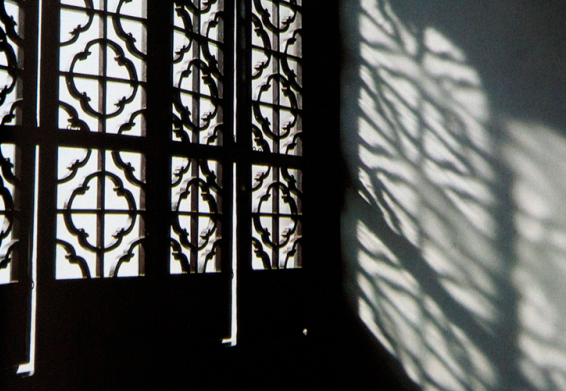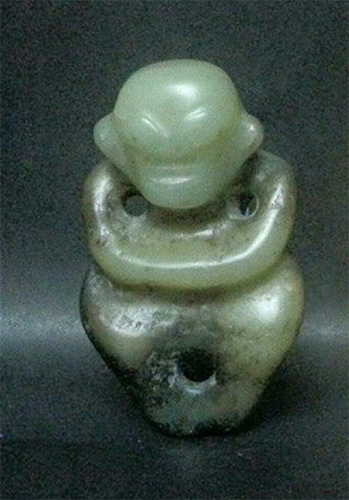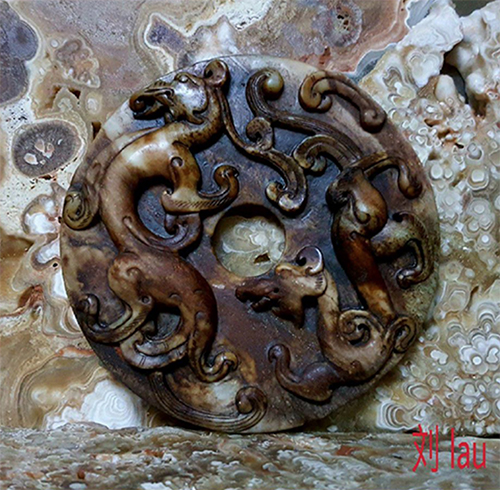He needed anonymity, and the only place he could find it was Macau. He loved wandering the narrow of streets, cramped with tintins, conflicting aromas of Chinese street food, and chatter.
Above these hole-in-the-wall shops were pastel-colored apartment buildings that were so narrow, tenants made balconies out of discarded wrought-iron balustrades. On a side street, Pedro walked by a 7-story building with two apartments on each floor. It had seven pairs of balconies in front, and the same number on each side. How was it still standing? It should have fallen from its own weight by now, but Pedro walked underneath 14 families’ laundry instead. If a porch was at the bottom of a stack, you might see a lantern hanging beneath, because one building was so close to another that it shut out the sun. Pedro hated that Chinese families were crammed into dark tenements on side streets.

On Macau’s avenues there was space. Colonial residences were resplendently Romanesque. Arched windows and doors were meticulously outlined by moldings. Columns graced the sides. Horizontal, wrought-iron balustrades served a decorative purpose. The balusters had scrolls and geometric patterns, and only went one-third of the way up. In response to sunlight bathing the rooms inside, people hung curtains or built wooden shutters. It was clear to Pedro that these mansions protected a Colonial hierarchy that negated the Chinese sense of space.

Strolling the Calçada da Barra, he basked in the sun in front of the A-Ma Temple. It was the Taoist structure that Portuguese sailors encountered when they first discovered Macau in 1557. Lattced doors projected different shadows on the wall depending on how the light hit them.

Yes, Macau was eccentric — constructed from the peculiar history of being a Portuguese colony for 450 years before becoming an autonomous territory of the People’s Republic of China in 1999.
As power was being transferred, the Portuguese government made one last play. “Who do you really belong to?” they asked, “Not China. Because of our Colonial presence, you have a unique cultural identity. You belong to Macau and will always be different from your compatriots on the Mainland.” Could the Portuguese seduce the Chinese into thinking Macau’s identity would never really be theirs? Many discarded this as fiction, but others struggled understand their place as defined by their former Colonial masters. In 1999, Macau’s idiosyncrasies created a more fragile society.
Pedro turned a corner, walking north from the bay in front of the A-Ma, and passed a shop selling small, abstract jade items. One was dark red. ‘That’s odd. I thought jade was only green,’ he thought. The bell sounded as he opened the door. Pleasantries were exchanged. “What is this?” he asked the owner, pointing to the dark red item, knowing full well the price would double. Photograph: Cloud formation from Hongshan Culture (4500 - 2500 BC). The Jade Collection of Pedro Guimarães “It is a Neolithic cloud formation. How much are you willing to pay?” Pedro felt the owner’s glance hammering the nails of crucifixion through his hands. “What is your best price?” he asked, accepting defeat. He bought 5 small pieces in different colors.
Tourists were a lower life-form, but shopkeepers fervently debated whether or not American tourists were human at all. One young girl had to quit school and run the family shop after an American couple opened the door and yelled, “Is there anything else to do here besides the casinos?” and her father had had a nervous breakdown.
An American gentleman Pedro watched browsing through the shop after this sale was different. “The jades you just bought are cloud forms from Hongshan Culture,” he said. “They were one of the Neolithic cultures that lived 6000 years ago in Liaoning Province.” He pointed his finger diagonally in the air, referring to the invisible map of China he had in his mind. “The province is named after the Liao River in Northeast China!” “Are you sure?” Pedro allowed his eyes to widen slightly. “Yes, I've worked with them all my life at the Metropolitan Museum of Art in New York. I’m retired now and am traveling through Asia.”
Pedro needed to calm himself with an egg tart from Margaret’s Cafe e Nata. She was a Chinese woman who married an arrogant Portuguese waiter nicknamed Lord Snow, which started a marriage of egg tart recipes. Then they got divorced and opened two competing cafes. He never felt Lord Snow’s egg tarts were better. Pedro remained loyal to Margaret because he liked more flaked layers of pastry, though it was less sweet. Walking into his room at the Hotel Lisboa with flakes all over him, he was annoyed to be savoring the last bite.
He put the jades on a table. What did they mean? Their smoothness made a hard stone soft, he thought, as his finger went in and out of well-defined grooves. Looking at a piece under the lamp, he saw how the holes were drilled. Were those original tool marks? Could a culture 6,000 years old have had rotary tools? The next morning, ragged and sleepless, Pedro scoured the streets for every shop selling jade he could find. The Lisbon he knew had disappeared. He was lost in himself, seeking an ancient world he never knew existed.
Again, he ended up walking along the Calçada da Barra toward the A-Ma Temple. While munching a pork bun he noticed another shop that had small, strange, humanoid figures in the window, and walked in. Pedro was too far gone to remember the pleasantries, but did swallow before speaking to the shopkeeper. “What are these? How would I know if they were real or fake?” He had stopped caring about the price.

The shop owner raised his eyebrows. He hadn’t heard that question in a very long time. Stroking his long grey beard, he looked at Pedro through wire-rimmed glasses and nodded with a curious smile. “They are the humanoid figures of Hongshan culture. When you have studied enough, you can tell whether a piece is real or fake by holding it in your hand and looking at it through a loupe. You also sense their energy patterns.” “Energy patterns?” he asked nonchalantly. “What energy patterns? How long does the study take?” He took another bite of bun. “Four lifetimes.” Pedro stopped eating. The shopkeeper’s stare unsettled him.
“Studying jade requires optimism, patience, endurance, and idealism. It makes you connect the abstract and the concrete, the visible with the invisible.” He observed Pedro’s reaction as if evaluating his worthiness. Pedro’s memory leapt back to boarding school, where the headmaster had lectured him about his inferiority in reading comprehension.
Pedro straightened his posture and tried not look too naive, and cleared his throat. The shopkeeper took a dragon out of his cabinet and ran his finger over its body. “Look at this dragon. It is from the Warring States Period. It was probably part of a pendant set.” Pedro had not heard of the Warring States Period, but did know what a pendant set was. “Even though it’s flat, the curved body gives you a sense of motion. The eyes give it a sense of direction. However, the legs go in two directions, which creates an illusion of ambiguity.” The shopkeeper pointed to the legs.

“Understanding what you see would take me more years of study than I’m going to live,” Pedro answered humbly. The shopkeeper was impressed by this observation. “Now look at this bi disc from the Han Dynasty.” Pedro had studied the Han Dynasty and felt more confident. “Here, you see a maze of three-dimensional dragons that interlock. Do you see how their chests and abdomens are distorted, so their legs can go in two directions? Han Dynasty beasts could not live in the real world, which begs the question, ‘Is the world that you and I perceive real?’”

“Your explanation might be too much for me to absorb in 20 minutes,” said Pedro, again transported into his past 12-year old self in his headmasters office. “I...” Sensing that his visitor was overwhelmed, the shop owner became reassuring. “Most people feel this way when they realize what studying China means. You will understand more if you choose to devote your life and study correctly.” “Thank you,” said Pedro. “So you bought five Hongshan jade cloud formations, the other shopkeeper told me.”
Gossip about sales spread. “Yes,” Pedro shook his head as he answered. “There are no sacred texts for Hongshan culture, so you have to dive into the vast, virgin territory of the unknown. Most get lost by the lure of little voices, tempting them to believe ghost theories, because imagination fills the void more easily. But you can’t do that. You must walk the path to knowledge using only what is known, and have the courage to face the naked truth of a man’s being.” Transfixed, Pedro bought the humanoid figure without negotiating. He would come back, but didn’t know when.

Replies